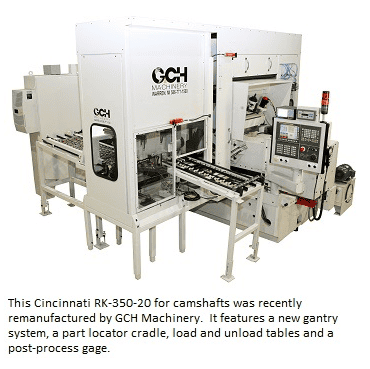
It’s one thing to know how to operate your grinders at peak performance, but it’s sometimes a completely different thing to know when to get a machine rebuilt and what to expect during the process.
And timing does count. Unnecessarily delaying a grinder rebuild can cost your company time and money in the form of frequent downtime, scrapped material and missed business opportunities.
Here’s a quick overview of how to know you need a remanufacture and what to do before you sign a contract.
How to Know It’s Time
There are several different ways to tell if you’re a candidate for grinder remanufacturing:
- Rising scrap rates
- Decreasing part quality
- Aging equipment
- Increasing demand from customers
Scrap rates and part quality are two very visible signs that your grinder needs some attention. The age of your equipment is another tell-tale sign: if the controls or hydraulics are no longer manufactured, it’s time to begin thinking about your grinder’s long-term viability.
Increasing demand is a somewhat surprising indicator, but one that our successful customers use to their advantage. Adding shifts or buying new equipment are usually the first two thoughts for manufacturers facing growing demand for their products and services. But, thanks to the remanufacturing innovations we’ve developed, a grinder rebuild can significantly boost productivity and meet increased demand.
What to Consider
When it comes to scrap rates, part quality and equipment age, the common first reaction often is to simply decide that one part or another needs to be replaced. But it’s worth the time to stop and review all of the grinder systems, including:
- Mechanical
- Hydraulic
- Electric
- Pneumatic
- Coolant
- Tooling
This “from the base up” approach includes reviewing how well the grinder adheres to the safety standards your company holds as well as what parts the machine processes and where it fits into your overall operations.
Who to Hire
If you’ve decided to pursue a grinder rebuild, the next step is to find the right vendor to remanufacture your machine. You’ll want to research potential remanufacturers online and get some good insights from other industry members about who they trust with their grinders.
Once you’ve hit on your top two or three vendors, there are two tasks that will help single out the right company for your project:
- Request four or five references and talk with each one personally to find out what each person liked about working with that vendor and, just as importantly, what they didn’t like about working with them.
- Visit each potential vendor’s facility and see with your own eyes if the sales person’s statements are true – does the company really have the resources, practices and capabilities you’ve been told?
In-person vetting takes a bit of legwork, but, considering the substantial cost of a rebuild, the extra effort is worth it.
What to Request
A successful remanufacture is a lot like a successful trip to the car mechanic or doctor. When your car – or your body – isn’t working quite right, you don’t get the result you need by going in and saying, “Replace my muffler” or “Remove my gall bladder.”
Your problem will only truly be resolved when you follow the experts’ lead, answer their questions and provide the information they request.
Here at GCH Machinery, we’ve found that the most successful method of quoting a grinder rebuild requires three key pieces of information:
- A manufacturer’s print of the part processed on the machine to be rebuilt. If there are several parts, we ask for a print for the smallest part and the largest part to provide an appropriate range.
- The annual number of parts the machine is supposed to process.
- The number of shifts that run the grinder.
Seven times out of 10, we’ll also send engineers to the plant to see how the machine fits into the overall operation, talk to the people on the plant floor to find out what they like – and don’t like – about using the grinder and take stock of any issues that hinder their efforts.
But the manufacturer’s print is the key. With it, we can see exactly what the resulting part should be, which completely informs how we need to rebuild the grinder. As Joe Giacalone, our vice president, likes to say, “If they give us the manufacturer’s print, we can give them the world.” Or at least the remanufactured grinder version of the world.
These four topics take us up to the point when a rebuild contract is signed. Next month, we’ll talk about what happens after the signatures are dry and what you can do to ensure you get the rebuild your operation needs.
In the meantime, read our blog about “What It Takes to Succeed at Grinder Rebuilding” to learn more about our approach to grinder remanufacturing.
And, if you’d like to know more about the possibilities of remanufacturing one of your machines, give us a call at 1.586.771.1500 or submit our RFQ form.
